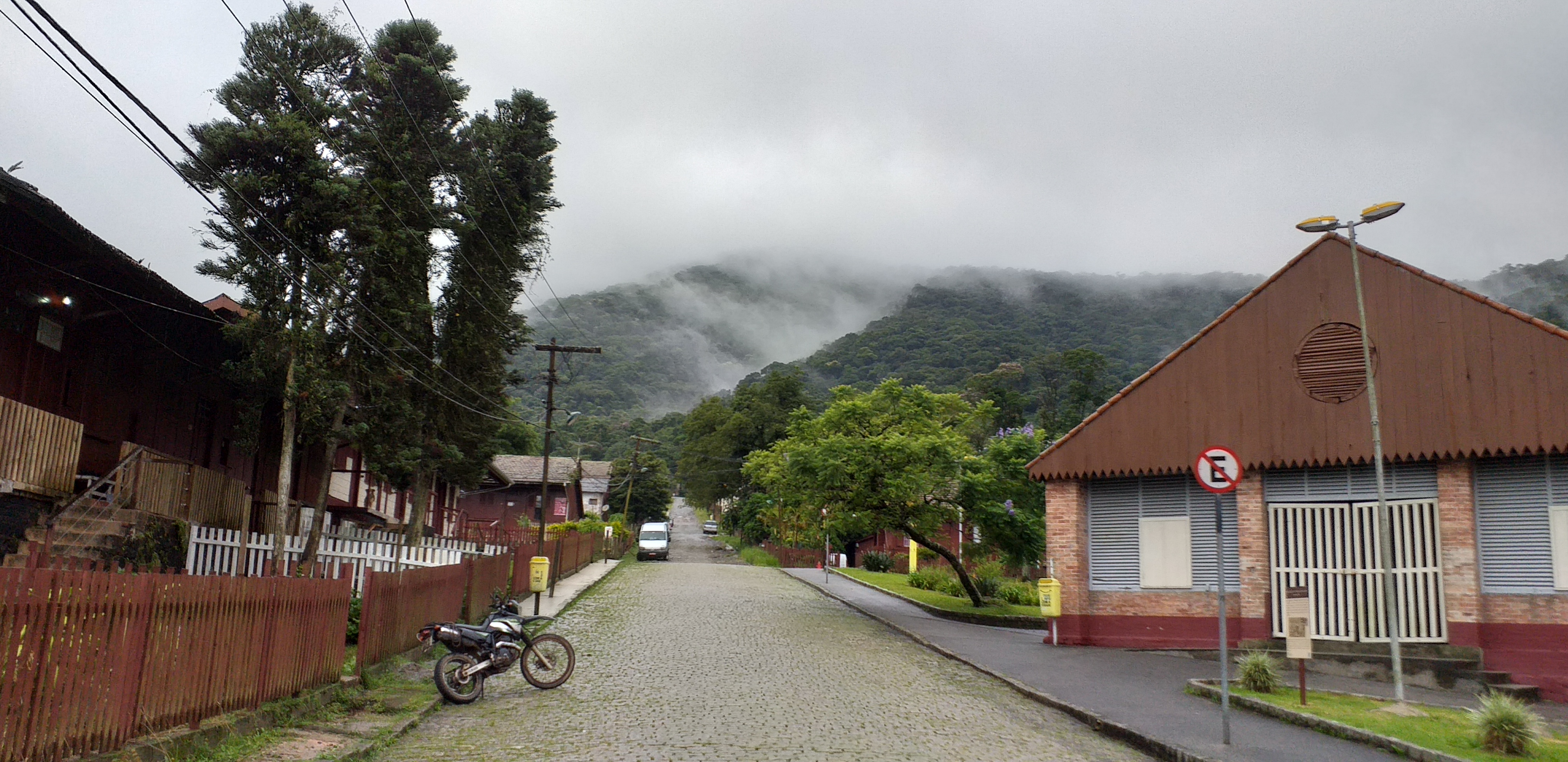|
Hell's Backbone Road
Hell's Backbone Road is a 38-mile (61 km) gravel road that was built by the Civilian Conservation Corps in the 1930s, and connects the towns of Boulder, Utah and Escalante, Utah. Halfway along the road is Hell's Backbone Bridge, which is long, and wide. A drop is on either side.http://www.nps.gov/history/history/online_books/ccc/ccc/chap6.htm The Forest Service and The Civilian Conservation Corps: 1933-42 http://www.nps.gov, (accessed 3 November 2008) Near the bridge are views of the Box-Death Hollow Wilderness. From late spring to autumn, the road, which climbs to more than 9,000 feet (2,750 m) elevation, is passable by ordinary passenger vehicles, but it is very narrow and winding. Hell's Backbone Road is a high-country alternative to the paved Utah Scenic Byway 12, which also connects Boulder and Escalante, 27 road miles (44 km) apart. Images Image:Hells Backbone-FallTrees.jpg, Image:Hells Backbone-Death Box Hollow.jpg, Image:Hells Backbone-Bridge.jpg, The ... [...More Info...] [...Related Items...] OR: [Wikipedia] [Google] [Baidu] |
Civilian Conservation Corps
The Civilian Conservation Corps (CCC) was a voluntary government work relief program that ran from 1933 to 1942 in the United States for unemployed, unmarried men ages 18–25 and eventually expanded to ages 17–28. The CCC was a major part of President Franklin D. Roosevelt's New Deal that supplied manual labor jobs related to the conservation and development of natural resources in rural lands owned by federal, state, and local governments. The CCC was designed to supply jobs for young men and to relieve families who had difficulty finding jobs during the Great Depression in the United States Robert Fechner was the first director of this agency, succeeded by James McEntee following Fechner's death. The largest enrollment at any one time was 300,000. Through the course of its nine years in operation, three million young men took part in the CCC, which provided them with shelter, clothing, and food, together with a wage of $30 (equivalent to $1000 in 2021) per month ($25 o ... [...More Info...] [...Related Items...] OR: [Wikipedia] [Google] [Baidu] |
Boulder, Utah
Boulder is a town in Garfield County, Utah, United States, 27 miles (44 km) northeast of Escalante on Utah Scenic Byway 12 at its intersection with the Burr Trail. As of the 2010 census, the town population was 226, an increase of nearly 26% over the 2000 figure of 180. Boulder, quite isolated until the Civilian Conservation Corps built a road from Escalante, did not get electric power until 1947. The town marks the western terminus of Burr Trail, a mostly paved road that runs eastward through spectacular red rock country to the Waterpocket Fold in Capitol Reef National Park. Boulder is the home of Anasazi Indian State Park. Geography Boulder is near Grand Staircase–Escalante National Monument and Capitol Reef National Park. According to the United States Census Bureau, the town has a total area of 20.9 square miles (54.2 km2), all land. Boulder also has many sandstone formations, such as small mountains and slopes. Trails and byways The American Di ... [...More Info...] [...Related Items...] OR: [Wikipedia] [Google] [Baidu] |
Escalante, Utah
Escalante () is a city in central Garfield County, Utah, United States, located along Utah Scenic Byway 12 (SR-12) in the south-central part of the state. As of the 2010 census, 797 people were living in the city. The city is named after Silvestre Vélez de Escalante, a Franciscan missionary and a member of the first European expedition into southern Utah. The nearest towns are Boulder which is to the northeast on SR-12, and Henrieville, which is to the southwest on SR-12. The Escalante Petrified Forest State Park is located west of the city. Sections of the Grand Staircase–Escalante National Monument (GSENM) abut much of the city's limits. The Hole-in-the-Rock Road, which begins east of Escalante, is the main access road into the eastern section of GSENM. The road leads to the Canyons of the Escalante, the Devils Garden and the Hole-in-the-Rock. History In 1776, Silvestre Vélez de Escalante and Francisco Atanasio Domínguez left Santa Fe, New Mexico attempting t ... [...More Info...] [...Related Items...] OR: [Wikipedia] [Google] [Baidu] |
Box-Death Hollow Wilderness
Box-Death Hollow Wilderness is a wilderness area located in south-central Utah, United States, on the Dixie National Forest. Vertical gray-orange walls of Navajo sandstone stand above two canyon tributaries of the Escalante River in Box-Death Hollow. The name Death Hollow gives reference to a number of livestock that plunged to their death trying to cross the steep canyon. Running north-south through a steeply dipping monocline, Pine Creek forms the box canyon (a canyon accessible only at the lower end) known as "The Box". Death Hollow Creek, east of The Box, has carved its way through a gently dipping monocline. Raging waters often flood these canyon narrows after a rain. Pinyon and juniper cover many of the plateaus above the canyons. Brown and rainbow trout are plentiful in Pine Creek and in portions of Sand Creek. Along the creek banks, you may see mule deer, an occasional cougar, or even elk in winter. Three bird species listed by the Utah Division of Wildlife Res ... [...More Info...] [...Related Items...] OR: [Wikipedia] [Google] [Baidu] |
Utah Scenic Byway 12
State Route 12 or Scenic Byway 12 (SR-12), also known as ''"Highway 12 — A Journey Through Time Scenic Byway"'', is a state highway designated an All-American Road located in Garfield County and Wayne County, Utah, United States. Route description Proceeding west to east for 122 miles (nearly 200 km), the highway starts south of Panguitch at an intersection with US-89, crosses part of Dixie National Forest and Bryce Canyon National Park, continues through the small towns of Tropic, Cannonville, and Henrieville. It crosses various parts of Grand Staircase–Escalante National Monument (GS-ENM), continues northeast through Escalante and over the Escalante River, then over the Hogback, a narrow ridge with no guardrails or shoulders and steep drop-offs on each side. It then proceeds north through more of GS-ENM, Boulder, the Aquarius Plateau, Grover, ending in Torrey at an intersection with SR-24, five miles (8 km) west of Capitol Reef National Park. The long po ... [...More Info...] [...Related Items...] OR: [Wikipedia] [Google] [Baidu] |
Roads In Utah
A road is a linear way for the conveyance of traffic that mostly has an road surface, improved surface for use by vehicles (motorized and non-motorized) and pedestrians. Unlike streets, the main function of roads is transportation. There are road hierarchy, many types of roads, including parkways, avenue (landscape), avenues, controlled-access highways (freeways, motorways, and expressways), tollways, interstates, highways, thoroughfares, and local roads. The primary features of roads include lanes, sidewalks (pavement), roadways (carriageways), median strip, medians, shoulder (road), shoulders, road verge, verges, bike paths (cycle paths), and shared-use paths. Definitions Historically many roads were simply recognizable routes without any formal construction or some maintenance. The Organisation for Economic Co-operation and Development, Organization for Economic Co-operation and Development (OECD) defines a road as "a line of communication (travelled way) using a stabiliz ... [...More Info...] [...Related Items...] OR: [Wikipedia] [Google] [Baidu] |
Civilian Conservation Corps In Utah
Civilians under international humanitarian law are "persons who are not members of the armed forces" and they are not "combatants if they carry arms openly and respect the laws and customs of war". It is slightly different from a non-combatant, because some non-combatants are not civilians (for example, military chaplains who are attached to the belligerent party or military personnel who are serving with a neutral country). Civilians in the territories of a party to an armed conflict are entitled to certain privileges under the customary laws of war and international treaties such as the Fourth Geneva Convention. The privileges that they enjoy under international law depends on whether the conflict is an internal one (a civil war) or an international one. In some nations, uniformed members of civilian police or fire departments colloquially refer to members of the public as civilians. Etymology The word "civilian" goes back to the late 14th century and is from Old French ''civ ... [...More Info...] [...Related Items...] OR: [Wikipedia] [Google] [Baidu] |


